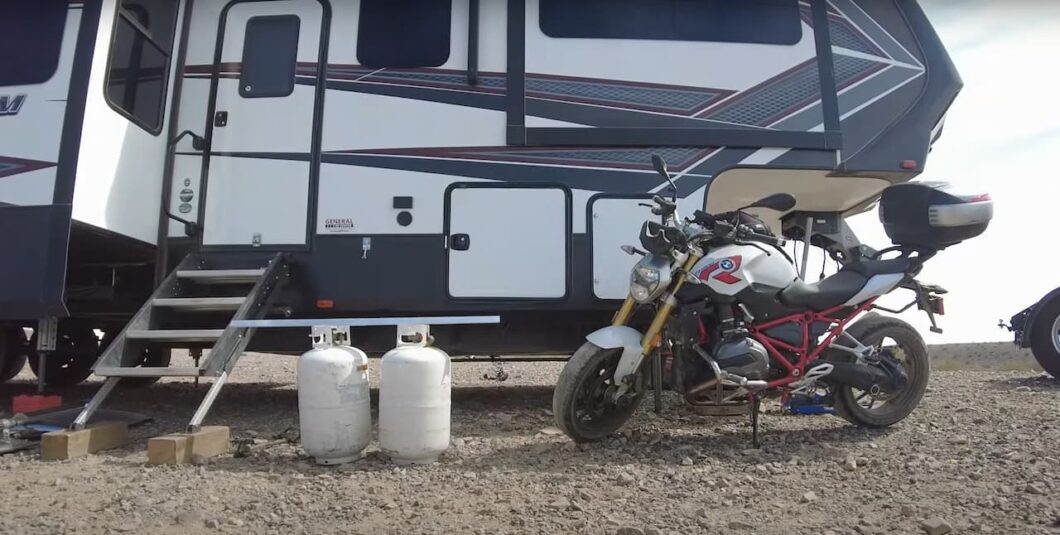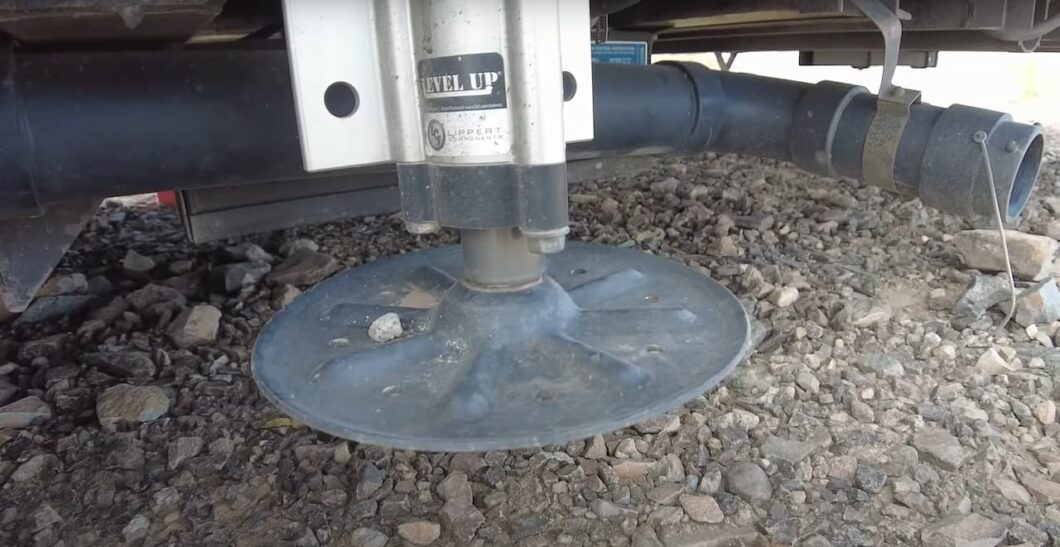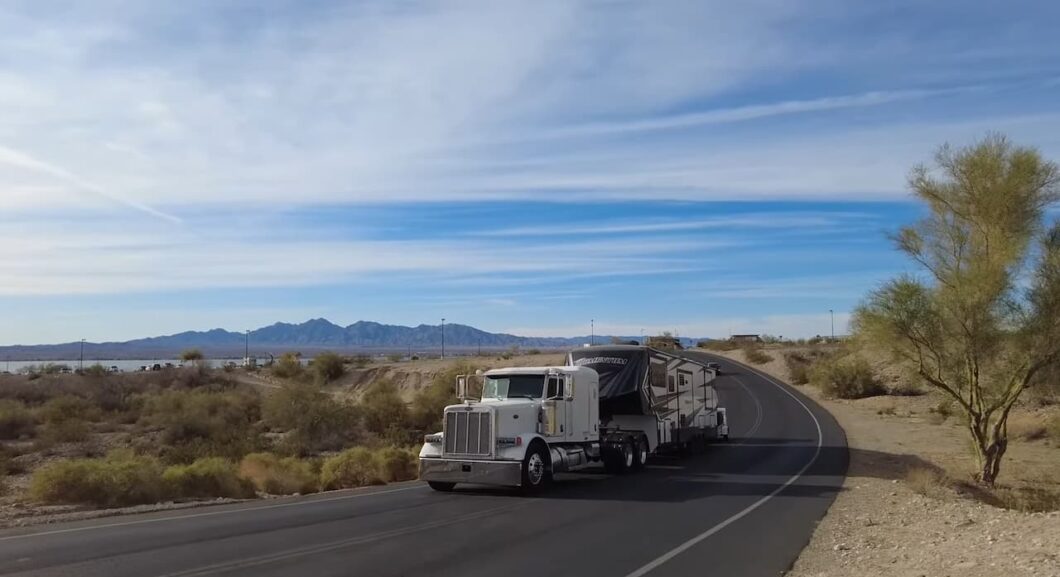Class 8 vehicles are more than heavy-duty, weighing in at more than 33,000 GVWR and requiring trucker’s licenses (CDL). These big trucks are seen on and off the road delivering supplies and equipment to a variety of job sites.
Are you thinking of converting your Class 8 truck into an RV? This can be a great way to save money on travel costs, but it can also be a bit tricky to do properly. In this blog post, we will walk you through the process of registering your truck as an RV. We will discuss the necessary steps and provide some helpful tips along the way!
What Is A Class 8 Truck?
A Class 8 truck is a truck with a Gross Vehicle Weight Rating (GVWR) of over 33,000 pounds. Most Class VIII trucks are used for commercial purposes, but some are modified for personal use as RVs.
If you have a Class VIII truck that you would like to register as an RV, there are a few things you need to do:
- First, you will need to obtain a Certificate of Title from the DMV. To do this, you will need to fill out an application and provide proof of ownership of the vehicle. You will also need to pay a fee. Once you have obtained the Certificate of Title, you will need to take it to your local DMV office and surrender it to them. They will then issue you a new Certificate of Title for your RV;
- Next, you will need to obtain registration for your RV. To do this, you will need to fill out an application and provide proof of ownership of the vehicle. You will also need to pay a fee. Once you have registered your RV, you will be issued a license plate which you will need to affix to the front and rear of your vehicle;
- Finally, you will need to insure your RV. You can do this through any insurance company that offers coverage for RVs. Once you have insured your RV, you will be able to enjoy it on the open road;

The Vehicle Registration Process
Applications For Registration
To register and title automobiles, a prospective applicant must submit an application to the respective state office. This might be the Department of Motor Vehicles (DMV) or Motor Vehicle Division (MVD).
The Department of Transportation (DoT), Department of Revenue (DoR), or some other comparable body is another possibility.
The application must include specific information about the vehicle such as its make, model, identification number (VIN), and odometer reading. The applicant will also need to provide proof of insurance, as well as payment for all required fees.
In some states, it may be possible to complete the entire process online. However, most states require that at least some paperwork be completed in person.
The application should include all of the vehicle’s information, such as the VIN (vehicle identification number), make, and model. It should be submitted right after acquiring a new or used automobile and applying for the title. The application might also be submitted when transferring an out-of-state title to the new state of residency.
The applicant will likely have to pay a registration fee at the time of submission. This is in addition to any taxes or titling fees that are required. The amount of the registration fee will vary by state, but it is generally based on either weight or vehicle type.
With no vehicle title, you won’t be able to receive the license plate and stickers or labels in order to drive the car lawfully on public roads. While all states must title a car, not all need it to be registered. Registration is not necessary for some types of trailers and boats.
Identification Of The Owner
The applicant will need to show proof of identity when submitting the application. A driver’s license or other government-issued identification should suffice. The ID must be current and valid, with a photo that clearly resembles the applicant.
In some cases, additional documentation might be required. For example, an out-of-state ID might not be accepted. In this case, a birth certificate or passport would likely suffice. If the vehicle is being registered in someone else’s name (such as a business), then documentation proving this relationship will likely be required as well.
Ownership Verification
The applicant will need to provide proof of ownership when registering the vehicle. The most common way to do this is with a title certificate. This document is issued by the DMV (or equivalent) once the car has been purchased. It includes information about the vehicle, as well as the name and address of the owner.
If the car is new and has never been titled before, then a bill of sale might be required instead. This document should include information about both the buyer and seller, as well as specifics about the transaction such as date, price, and vehicle description.
Pay Registration Fees
Registration fees for motor vehicles differ from state to state. The registration fees that must be paid depending on the type of vehicle, usage, weight, and a variety of other factors. Depending on certain or all of the criteria mentioned above, registration renewals are required every six months, year, or two years.
Changing your vehicle’s registration to a new state will necessitate the owner’s re-registration in his or her new home state. A license plate (or plates) will be supplied after paying the registration fees.

Registration Renewal Processes
Renewal Online
In some states, you can renew your car’s registration online up to 90 days before it expires. While this isn’t available in all jurisdictions, it’s the simplest and most convenient method. You’ll need a major credit card to pay your registration fees.
To renew your registration online, you’ll need:
- Your car’s license plate number;
- The last four digits of your Vehicle Identification Number (VIN);
- Your credit card information;
In most cases, you can renew your registration for one or two years at a time. Once you’ve completed the renewal process, you’ll receive new tags in the mail within a few weeks. If you plan to travel out of state, be sure to check the expiration date on your current tags to ensure they’ll still be valid.
Renew By Mail
In most states, registration renewal may be completed by mail. If you intend to use this method, make sure to submit your request ahead of time so that the state has enough time to process it and send you your updated certificate and sticker or tab.
Renewal In Person
You can also renew your registration in person at a DMV office or authorized third-party provider. When doing so, you’ll need to complete a renewal application and submit it along with the required fees. You may be able to pay these by cash, check, money order, or credit card, depending on the location.
Things To Remember When Registering A Class 8 Truck As An RV
- The first thing you need to do is consult your state’s DMV office to see what specific documentation is required in order for you to register your Class 8 truck as an RV;
- Next, you will need to take your vehicle identification number (VIN) and have it verified by a licensed DMV agent;
- After the VIN has been verified, you will be able to complete the registration process and pay any associated fees;
- Finally, once your registration is complete, you will need to obtain insurance for your RV just as you would for any other type of vehicle;

FAQ
What is the longest RV allowed on the road?
The length of a motorhome is 45 feet, and the maximum height for an RV is 14 feet.
If you are more than 10 miles from the designated highway, the width should be 8 feet, with a height of 13.5 feet. If there are two or three vehicles in the combination, the total length should be 65 feet.
What is the best state to register a motorhome?
The easiest and cheapest state in which to purchase and register an RV is Montana. Montana has no state sales tax and just three counties impose local taxes, making it the most tax-friendly state in the nation. The state also doesn’t require an inspection of out-of-state RVs.
Other states with low taxes and fees for RVs include Delaware, Oregon, New Hampshire, Arkansas, South Dakota, and Alaska. Arizona, Nevada, Texas, Florida, and Wyoming are also good choices.
Can I drive a 40-foot RV?
Yes, you can drive a 40-foot RV.
You will need to have a valid driver’s license and be at least 21 years old. You will also need to have a clean driving record. If you do not have a clean driving record, you may be required to take a defensive driving course.
Class A, B, and C RVs can be driven with a regular driver’s license in most states. However, some states require an endorsement on your license if you are driving a Class A RV. Check with your local DMV for more information about license requirements in your state.
Does RV length include tow vehicles?
Yes, the entire length of your RV may include your tow vehicle. Even if some RV sites or campgrounds claim that you only need to consider the overall length of your RV with your tow car or any additional attachments, you should know how long your RV is when joined with your tow vehicle or any other accessories.
Can you claim an RV as a primary residence?
At any one time, only one residence may be designated as the primary home by the IRS. The main home must be where you spend the most time during the year. This can even apply to a boat or RV if it does not have a permanent mooring.
You will need to file IRS form 8829 if you have a mobile home or RV and would like to deduct your mortgage interest, property taxes, and any other qualified expenses.
What is the life expectancy of a Class A motorhome?
The average life expectancy of a Class A motorhome is about 20 years. However, many people keep their motorhomes for 30 years or more. With proper maintenance, your Class A motorhome should last for many years.
Class A motorhomes are the largest and most expensive type of RV. They are usually built on a bus chassis and range in length from 25 to 45 feet. Class A RVs have all the amenities of a home, including a kitchen, bathroom, bedroom, and living area.
What is the simplest process of Class 8 truck registration?
The process is not as difficult as one might think. In fact, the steps are quite simple:
- Determine the Vehicle’s Use. The first step is to determine how you will be using your vehicle. Are you going to be living in it full-time or just using it for occasional weekend getaways? This will help you decide which state laws and regulations you’ll need to follow;
- Gather the Required Documentation. Next, you’ll need to gather all of the required documentation. This includes things like a completed application, proof of residency, vehicle registration, and title. You may also need other documents depending on your state’s requirements;
- Submit the Application and Documentation. Once you have everything together, you can submit your application and documentation to the appropriate office. This is usually the DMV or DOT. They will then review your materials and approve or deny your request;
